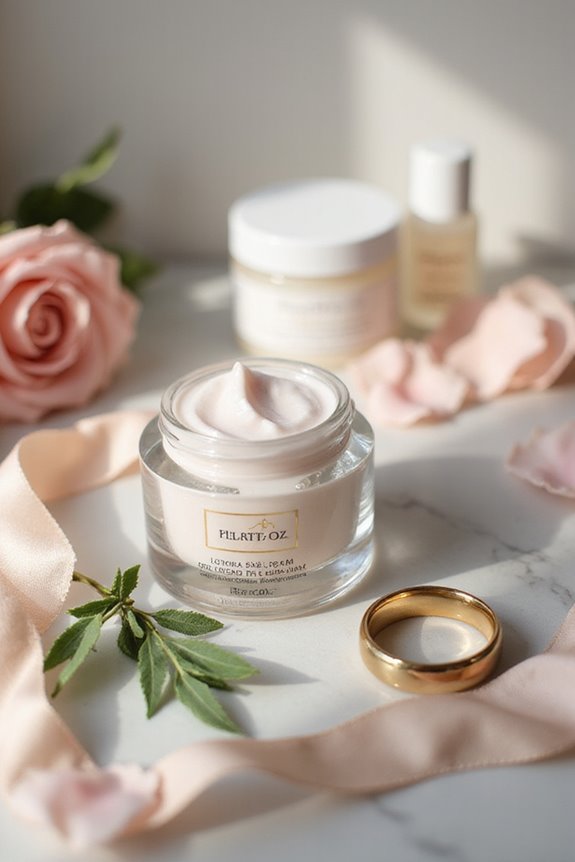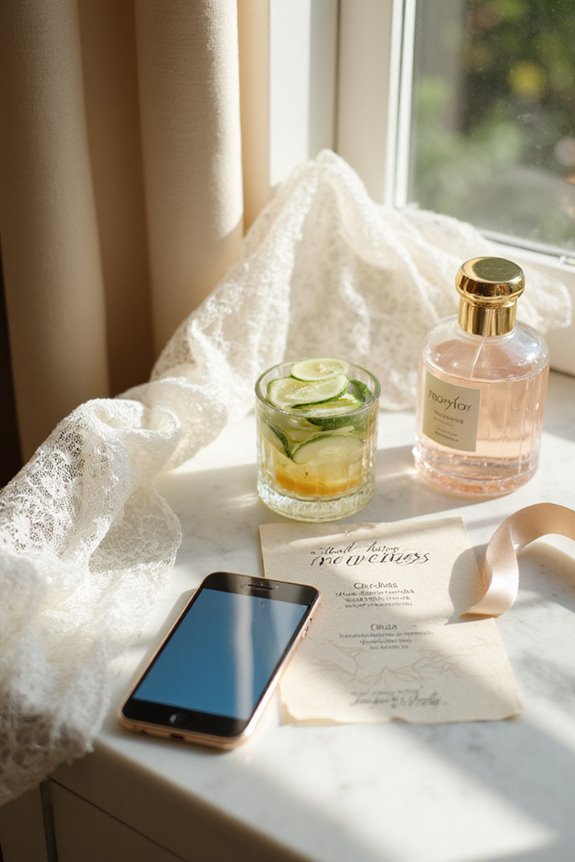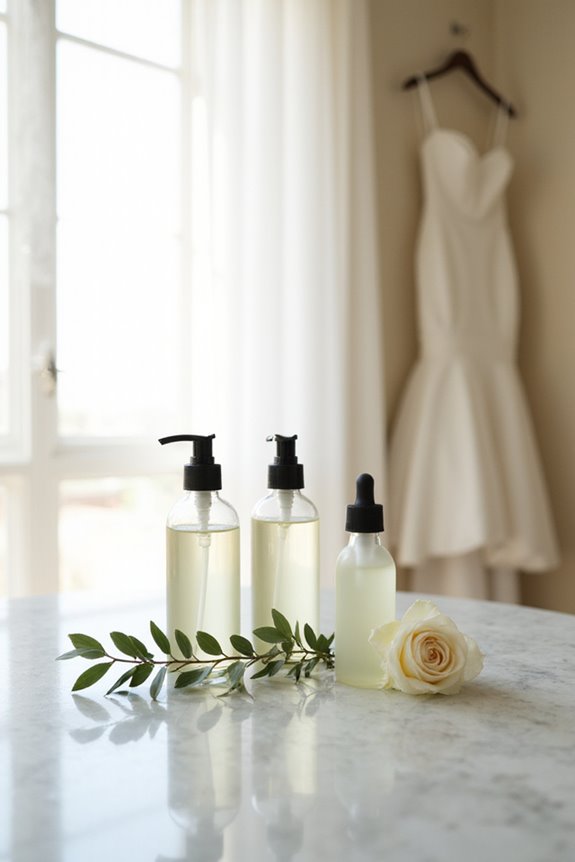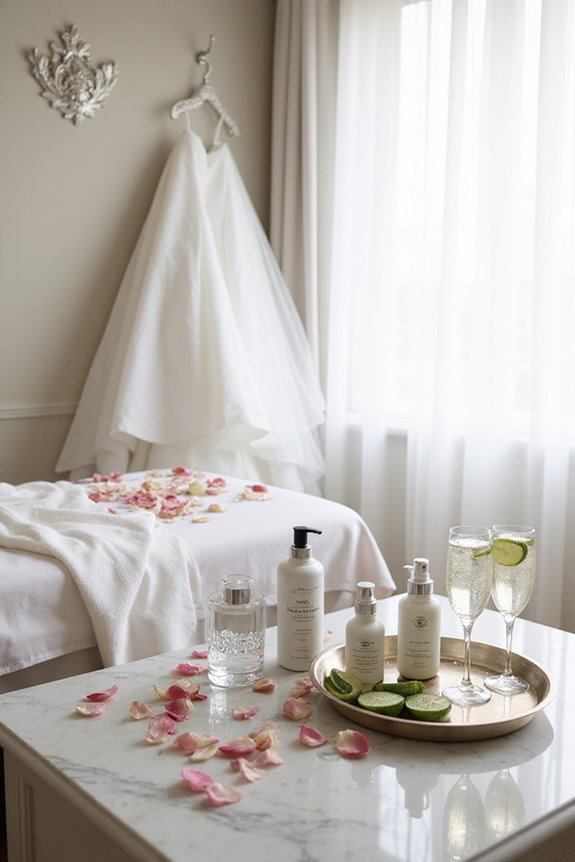Choosing the right foundation shade can be tricky, but we’ve got a few tips to make it easier. First, identify your skin tone and undertone by checking your veins—blue means cool, and green means warm. Always swatch a few shades on your jawline in natural light, and don’t be shy about asking for samples! Mixing two shades can also save the day. Stick around, and we’ll share more secrets to help you find your perfect match!
Key Takeaways
- Identify your skin tone (fair, medium, deep) and undertone (cool, warm) by checking your veins and jewelry preferences.
- Swatch 3-4 foundation shades on your jawline and blend down to the neck for the best match.
- Always assess foundation shades in natural light to avoid misleading color perceptions caused by store lighting.
- Be aware that skin tones can change seasonally; adjust your foundation shade accordingly or mix two shades for a perfect match.
- Utilize modern tools like AI algorithms and virtual try-ons to enhance your foundation shade selection process.
Understanding Your Skin Tone and Undertone
When we think about choosing the right foundation shade, it can feel a bit overwhelming, especially since we often confuse skin tone with undertone. Skin tone variations include fair, medium, and deep, but undertone identification is what really helps us nail that perfect match. For instance, if our veins look blue, we probably have cool undertones and should go for pink-based foundations. On the flip side, if our veins are greenish, warm undertones call for yellow or golden bases. A quick jewelry test can also help; silver suits cool tones while gold flatters warm tones. Remember, it’s all about finding what blends seamlessly with our unique skin. Don’t stress too much—experimenting is half the fun!
Common Challenges in Finding the Right Shade
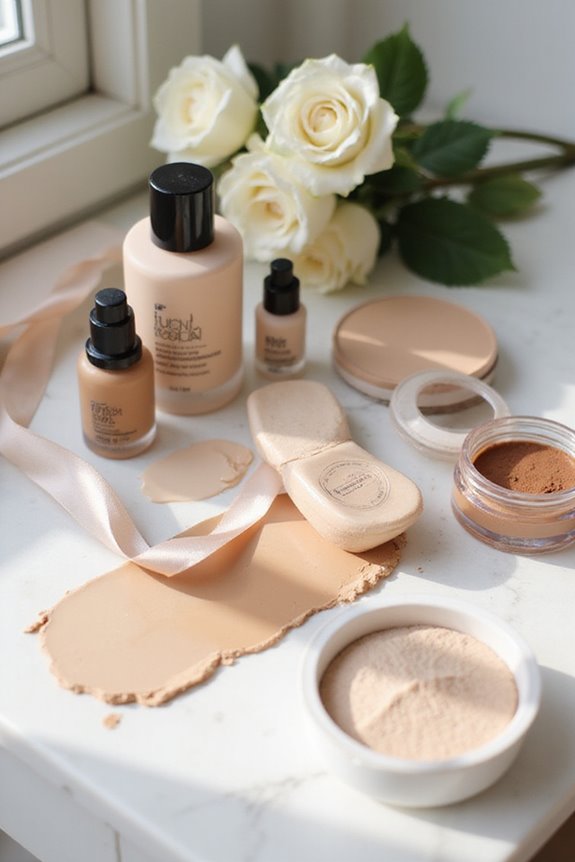
Finding the perfect foundation shade can feel like a treasure hunt, can’t it? One big challenge is the limited shade diversity. Many brands still focus on lighter tones, leaving deeper skin tones with fewer options. This can make us feel excluded.
Another hurdle is color perception. The lighting in stores often doesn’t reflect how the shade will look in natural light. We might think we’ve found our match, only to discover it doesn’t work at home.
To tackle this, it’s helpful to test shades in various lighting. Don’t hesitate to ask for samples, too! Remember, it’s okay to try multiple shades before finding the one that makes us feel confident and radiant. Let’s embrace the journey together!
Effective Methods for Shade Matching
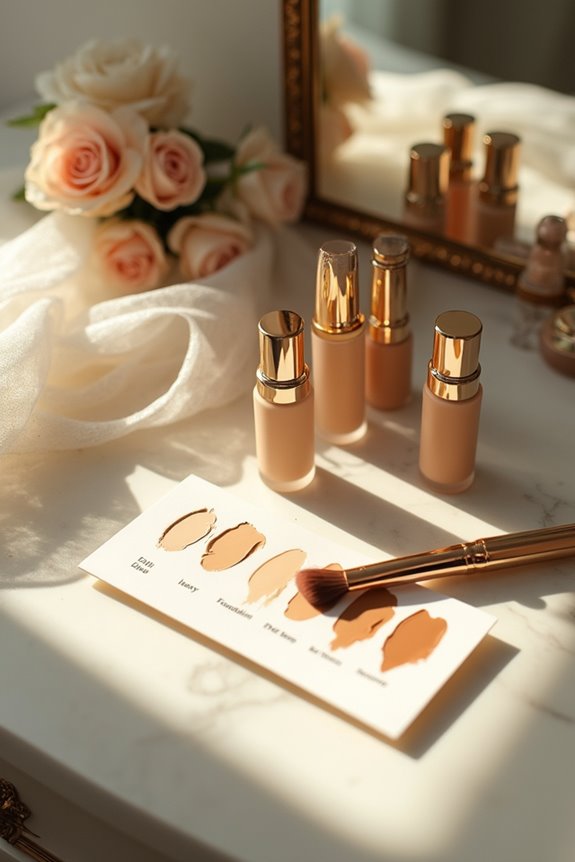
It’s easy to feel overwhelmed by the array of foundation shades available, but we can simplify the process with some straightforward techniques. First, let’s identify our skin tone and undertone. Check your veins: blue for cool, green for warm. Next, swatch 3-4 shades on your jawline, blending down to your neck. This guarantees shade consistency and helps us avoid that dreaded mask effect! Always assess in natural light—trust us, fluorescent bulbs are not your friends.
The Role of Modern Tools and Technology
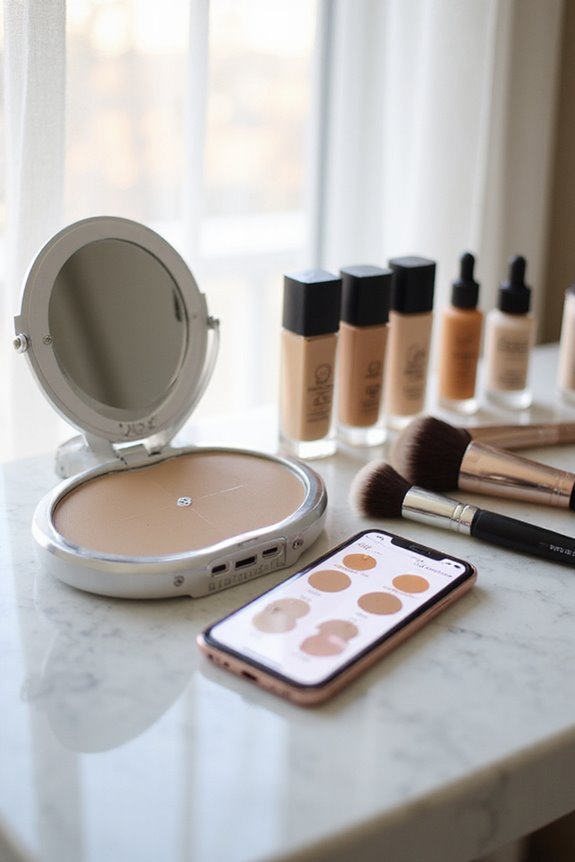
Steering through the world of foundation shades doesn’t have to feel like searching for a needle in a haystack. Thanks to modern tools and technology, we can simplify the process. AI algorithms analyze skin tones using extensive shade databases, allowing for precise color matching. We can utilize virtual try-ons to see how shades look on our own images, reducing the guesswork. Plus, mobile apps offer convenient skin analysis that considers our user preferences like skin type and desired finish. With machine learning and predictive analytics, these tools continually improve, ensuring we’re always in the loop about new trends. So, let’s embrace these innovations and make foundation shopping a breeze! After all, who wants to play hide-and-seek with makeup?
Key Considerations for Choosing the Right Shade
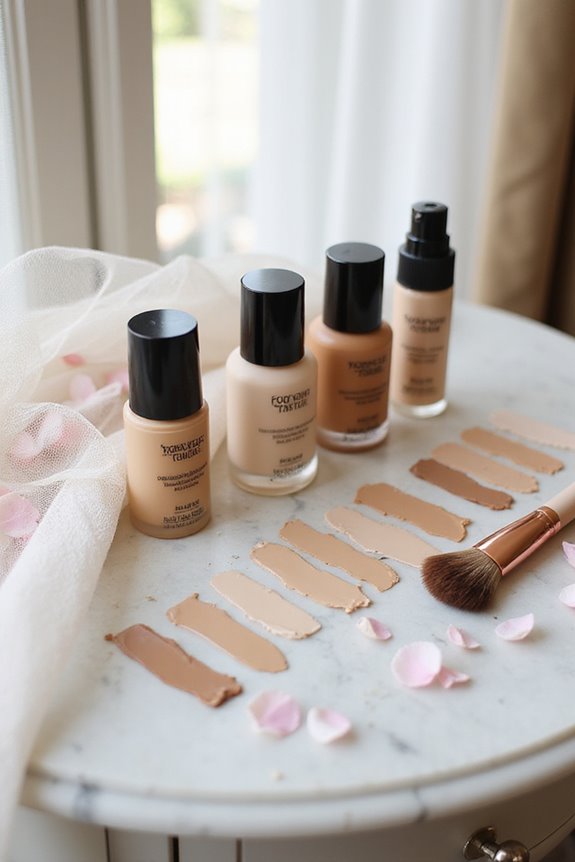
How can we make choosing the right foundation shade feel less overwhelming? First, let’s remember that skin tones vary widely, so there’s a shade variety for everyone. Identifying our undertones—cool, warm, or neutral—can guide us toward the right shades. For instance, if we have cool undertones, look for foundations with pink or blue hues.
Next, consider product formulation. Some formulas work better for specific skin types—oily, dry, or combination—affecting how the shade appears.
Lastly, testing in different lighting is essential. Natural light reveals the true shade, while artificial lights can trick our eyes. So, let’s keep these tips in mind, and we’ll find that perfect match in no time!
Practical Tips for Testing Foundation
When we think about testing foundation, what’s the best way to guarantee we find that perfect match? First, we should apply swatches on our jawline, as this area blends our face and neck tones. Let’s try multiple shades side by side to see how they blend and their undertones. Remember, natural lighting is key! Stand by a window or go outside to see true colors without artificial lighting messing things up.
To enhance our swatch application techniques, we can use a cotton swab to check if the foundation matches our skin underneath. And don’t forget to hydrate our skin first! Testing in different environments helps us find the best shade for any occasion. So, let’s get to work and find that flawless match!
Seasonal Variations and Shade Adjustments
As the seasons change, so do our skin tones, which can make finding the right foundation feel like a bit of a treasure hunt. We should keep an eye on those seasonal adjustments! In winter, our skin tones often lighten, so using a paler shade can help. If you’re not ready to buy a new foundation, consider mixing two shades for a perfect match.
Let’s not forget to assess our skin tone in natural light—this can make all the difference. Many of us don’t adjust our foundation with the seasons, but doing so can improve our overall look. Embracing these skin tone shifts can truly elevate our makeup game, making us feel more confident every day!
The Benefits of Expert Assistance and Technology
Finding the right foundation shade can feel overwhelming, especially with so many options out there. That’s where expert consultations and technology integration come into play. By consulting with professionals, we can navigate our unique skin tones and get recommendations tailored just for us. Plus, AI-powered shade finders analyze our undertones quickly and accurately, saving us from guesswork.
Imagine being able to try on different shades virtually! This technology not only boosts our confidence but also helps avoid those regrettable mismatched purchases. With expert guidance and cutting-edge tools, we can embrace our beauty without the stress. So, let’s tap into these resources, have some fun, and find that perfect foundation shade together!
Frequently Asked Questions
How Do I Know if My Skin Is Dry or Oily?
To determine our skin type, we can observe oil production by checking for shine in the T-zone or tightness after washing. Identifying these signs helps us understand whether we have dry or oily skin.
Can I Use Foundation if I Have Sensitive Skin?
We’ve all been there, wondering if we can trust foundation with our sensitive skin. Fortunately, we’ve got options! Talc-free, non-comedogenic, and natural formulations help keep our skin calm while looking fabulous. Let’s explore together!
What Ingredients Should I Avoid in Foundation?
When selecting foundation, let’s avoid chemical irritants like parabens and fragrances. Prioritizing skin compatibility helps us maintain healthy skin and reduces the risk of irritation or breakouts, ensuring we look and feel our best.
How Often Should I Replace My Foundation?
Isn’t it wild how our foundation lifespan can vary? We should replace it every 6 to 12 months, depending on usage and proper foundation storage, ensuring our makeup stays fresh and our skin healthy!
Does My Foundation Need to Match My Concealer?
When it comes to concealer compatibility, our foundation formulation doesn’t need to match exactly. We can choose a lighter concealer for brightness or match it for seamless coverage, depending on our desired makeup effect.


